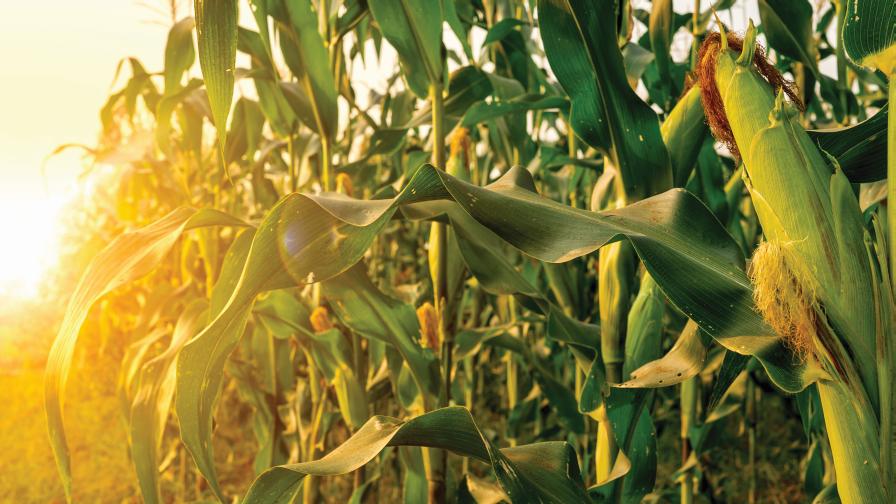U.S. Agriculture: Challenging Times Ahead
Having spent a lot of time analyzing U.S. agriculture and prognosticating on what will happen next, my bottom line assessment is that the heady returns of the last few years are probably over, but the fears of the most pessimistic among us are probably overblown as well. Simply put, Midwest American agriculture is likely entering the early stages of a cyclical correction.
Note that I reference the Midwest because the biggest boom (bubble?) has been in row crop agriculture in the Heartland (especially corn and soybeans), largely as a result of the ethanol boom.
Drivers Of The Ethanol Boom
Ethanol is at the core of the situation in which American agriculture finds itself today. Many people have asked me what drove this ethanol boom. In my view it was a unique combination of both private and public support to both supply and demand for ethanol:
- The U.S. government supported ethanol demand through RFS, blender subsidies, the phase-out of MTBE in gasoline and R&D support for ethanol research.
- The U.S. government further supported domestic supply of ethanol through tax credits on biofuel facility construction and imported ethanol tariffs.
- Private industry supported the demand for ethanol through the expansion of hybrid and flex-fuel vehicle fleets as well as the overall growth of the greentech investment industry.
- The supply side of ethanol was supported by the ag industry (which had a large supply of cheap corn) due to both productivity (GMO corn) and favorable weather. The private equity and banking sectors supported supply through large quantities of cheap credit.
The net effect of this public and private support to ethanol was a surge that resulted in some 200 ethanol plants operating in the U.S. consuming 30% to 40% of the corn crop.
As a result of the ethanol boom, the price of corn jumped from the average price of $2.37 over the 35-year span from 1970 to 2005 to a much higher range between $4 and $7.50 a bushel, about two to three times the historical average. I have heard ethanol supporters claim that ethanol has had no effect on corn (or food) prices. My only question is: What are you smoking? Of course ethanol has raised corn prices! A primary reason corn ethanol is so strongly supported by corn growers (and many others in agriculture) is precisely because it has had the effect of creating a solid demand (price) floor under the commodity.
We all know in agriculture that commodity prices are set by the marginal demand in the market. The ethanol boom created demand for 5 billion bushels of corn, most of which was met with new production. This demand for corn not only drove corn prices to new heights, but also raised the entire commodity crop complex (which after all has to compete with corn demand to get acres). I find it somewhat amazing that anyone could argue with a straight face that adding 40% incremental demand to a commodity crop would not affect the price. Anyone who could seriously advance this argument clearly flunked Economics 101.
By the way, I am not saying that higher corn demand and higher corn prices are bad for American agriculture. In fact, I think they are good for American farmers and American agriculture. Higher prices not only support farm income but also support the investments in emerging technologies that are crucial to increasing agricultural productivity to meet the burgeoning demands of feeding 9 billion people by 2050 without massive subsidies. Corn prices of $2/bushel would simply not support this investment. But we need to quit arguing that ethanol has had no impact on the price of corn or food — that is patently false and just embarrassing. Instead, let’s embrace that enhancing the profitability and productivity of agriculture is essential to building the capacity to feed the world in the future.
Oil Arbitrage
One unintended consequence of the ethanol boom is that we have created an arbitrage situation with oil. Since crude oil is converted into gasoline and ethanol derived from corn is a substitute for gasoline, resulting in a direct correlation between oil and corn prices. This helps agriculture when oil prices are high, but when oil prices decline (global recessions, fracked natural gas competition) it can put downward pressure on ag prices.
The Effect Of Monetary Policy
Another related effect is that of monetary policy. The U.S. government has been printing money at the rate of $85 billion per month for the past few years and has been using monetary policy to lower the relative value of the dollar, which supported higher commodity prices. With the focus on “tapering” all the talk in Washington right now, it’s possible we could see a stronger dollar, which could have a negative impact on commodity prices.
Seven Impacts Of ‘High Corn’
Regardless of how we got here, what’s clear is that commodity prices in general — and corn prices in particular — have been well above historical norms for most of the past five years. This period of high prices has caused several impacts that feel good in the short term but sow the seeds of distorted valuations and mal-investment (which ultimately don’t feel nearly as pleasant). These long-term impacts fit into seven primary categories:
1. New Technology Introduced into Agriculture. Technologies which generate an incremental few bushels of corn are very difficult to justify when prices are low. At higher prices, however, farmers can quickly justify the expenditure. The boom in biologics, specialty fertilizer and enhanced seed all provide evidence of this technology induction effect. A related phenomenon we are observing is technology migration from high value coastal crops to the Midwest. This is by far the most desirable and sustainable impact of the price boom, as these technologies will probably be around far longer than temporarily elevated corn prices.
2. New Land Introduced into Production. The value of corn and soybeans has resulted in significant acreage expansion in these crops. In many cases this acreage came from other crops such as wheat, oats, barley, and sorghum, but a great deal of this acreage came from conservation reserve (CRP) acreage that was rolled out of conservation and into production. After five straight years of increases, in 2013 farmers planted the most acres of corn since 1936.
3. Demand Rationed Among Existing Users. Some of the loudest critics of ethanol have been livestock producers, for an obvious reason. The spike in corn prices over the past five years has resulted in significant profit declines for livestock producers, extraordinary efforts to incorporate alternatives like DDGSs into rations, and downsizing of herds to cope with decreased profitability.
4. Increased Farm Income. Farm income has spiked in recent years as enhanced corn profitability drifted down to the bottom line. U.S. growers have reaped record profits over the past several years, ironically even in the drought year of 2012, due partly to dramatically higher prices and partly to lucrative crop insurance payments.
5. Higher Seed, Chem and Equipment Sales. Sales of inputs, from fertilizer to chemicals to seeds to equipment, have all risen dramatically over the past five years. Part of this growth was volume growth due to greater acreage, but a substantial portion was unit pricing growth for primary inputs.
6. Increased Ag Asset Prices, Especially Land. We have all been reading for several years about the dramatic increases in farmland prices, with quality Midwest farm ground fetching $12,000 to $15,000 per acre. Cash rents have doubled with many growers paying $350 to $500/acre.
7. Outside Investment in Agriculture Stimulated. Outside ownership of farmland is increasing dramatically, with institutional and private investors buying substantial quantities of farmland. Private equity and venture firms have also substantially increased their investment in the sector.
Waning Ethanol Support
For those following the news on the RFS, a great debate is underway on whether U.S. government support to ethanol will be decreased. Regardless of the outcome of this debate, it seems the presence of the RFS has been largely priced into commodity markets, which means the only logical impact of a reduction in the RFS is a further decline in corn pricing.
This is critical as the markets have adjusted to a “new normal” of 13 billion gallons of corn ethanol.
The majority of the impact of this volume has already been built into the markets, which means the most likely impact of any changes to the RFS are downward as the market responds to less demand than what it had previously priced for corn in ethanol.
The high price of corn has had the impact that any economist would predict — expansion of supply and destruction of demand. More corn acres, both in the U.S. as well as abroad, have increased supply, as well as a deep focus on the development of yield enhancing technology. The livestock industry and corn export markets have borne the brunt of the corn demand destruction. Ethanol demand destruction is more erratic as variability in global oil prices, along with corn, determines the “spread” for ethanol production.
The Road From Here
Most importantly, the profit engine for producers is sputtering as higher land and input prices combine with reduced corn prices to dramatically shrink margins. At the likely contribution margin from corn production, today’s cash rents are simply unsustainable — cash rent negotiations between landowners and tenants is likely to be pretty painful this winter. We can also expect dramatically tighter production margins to negatively affect input and equipment sales volumes and pricing strength going into 2014. Recent declines in corn prices, when combined with better protein prices, should enhance livestock profits along with corn demand.
In economic terms, the ag market has “gotten ahead of itself” and we can expect a year or two of correction while we undergo some demand expansion and supply contraction, the exact opposite of the past few years. By 2016-17 a more sustainable long-term bull market built on global demand is likely to emerge after our secular agricultural uptrend experiences a cyclical correction.





